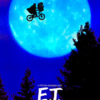Jon Klassen is the creator of the #1 New York Times bestseller I Want My Hat Back. The book was was named a Theodor Seuss Geisel Honor Book, an E. B. White Read-Aloud Award winner, a New York Times Book Review Best Illustrated Children’s Book of the Year, and a Publishers Weekly Best Children’s Book of the Year. He has done design work for DreamWorks Feature Animation as well as LAIKA Studios on their feature film “Coraline”. On the success of “I Want My Hat Back”, Candlewick Press is releasing his follow-up children’s book “This is Not My Hat”. Jon took out some time to chat with Media Mikes about his books and his inspiration.
Mike Gencarelli: Tell us about how “I Want My Hat Back” came to fruition?
Jon Klassen: “I Want My Hat Back” came from an idea about the cover – I liked a character not wearing a hat and the title being “I Want My Hat Back”. Around the same time I did some greeting card drawings with a bunch of animals wearing party hats but not looking too excited about it, and one of them was a bear and I thought, “well, he’s wearing a hat, lets try that.” The story itself came pretty quickly after I decided to do the whole thing in dialogue. I got very lucky to find a home for it at Candlewick – they totally got it and made it way better than I even pictured.
MG: How can you reflect on the success and internet reaction of “I Want My Hat Back” The internet meme stuff was a huge surprise. What was interesting is that they were based on photographs of the book that someone posted but they didn’t post the last few pages where you find out what happened to the rabbit, so I started getting emails from people that had found out the ending much later. I still have no idea why it got picked up and spread around like that, but I’m very happy it did.
MG: How did the story for “This is Not My Hat” comes about?
Very haphazardly, much the same way the first book did. I’d been trying some other stories with the animals from the first book and they weren’t working, so I tried a few with fish, and they didn’t involve hats, really, and then this one just came up one night and happened to involve a hat theft again! I was pretty surprised.
MG: Are you nervous about trying to achieve follow-up success with this next book?
JK: I was a little bit, but I tried to keep my head down to whatever the first book was doing out there while I was working on this second one. I knew, or at least I hoped, that some people who saw this book wouldn’t have seen the last one, and I wanted it to stand on its own as much as it could.
MG: What do you enjoy most about writing children’s books?
JK: I think I like best how clear and simple the wording has to be, even though the story can be more complex. Having the mandate of simple language is a really fun rule. I also like how it only has to be part of the story, since the pictures need a job to do, too. It takes the pressure off the actual writing part, though not off the get-a-good-idea part.
MG: Tell us about your experience working on the stop-motion film “Coraline”?
JK: On “Coraline” I did a lot of drawings for sets and props and just general concept pictures. I worked at the studio on it for a little under two years, and it was an amazing thing to be on. I would make a drawing of a little chair with some fabric on it, and then they would build it – way better than I had drawn it – with the little fabric and little fabric nails and wood details and come and show it to me. It was insane. Some of the sets were huge, too. You go and look at them being built and you just think “man, I hope I thought this through…”. I think it’s a great-looking film, though, and I’m really proud to have worked on it.
MG: What other projects do you have in the cards?
JK: I’m working on another book of my own for Candlewick and also illustrating another book that Mac Barnett wrote. Both are still in the early stages where it sounds like you’re keeping it secret but really they’re not figured out yet.
Related Content
- Book Review: “McElligot’s Pool” by Dr. Seuss
- Murray Langston talks about his new book “Journey Thru the Unknown”
- Kevin J. Anderson talks about books "Hellhole Awakening", "Mentats of Dune" and working with Rush’s Neil Peart on "Clockwork Angels"
- Book Review “The Colony: Renegades” by Michaelbrent Collings
- Book Review “Alien – The Illustrated Story (Original Art Edition)


